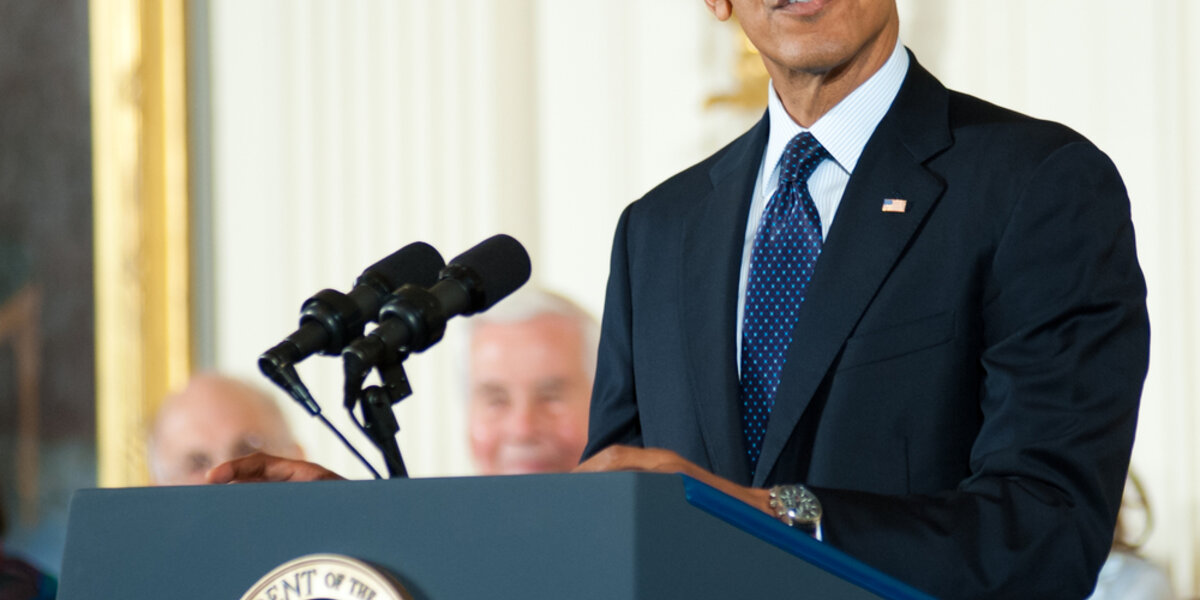A Look Back: EE Champion in Chief Releases Historic CAFE Standards
Let's Save Energy
Alliance to Save Energy's Blog
A Look Back: EE Champion in Chief Releases Historic CAFE Standards

This is the first in a series of posts about the Administration's strong and successful efforts on energy efficiency.
In his 2013 State of the Union, President Obama set forth the bold but achievable goal of doubling U.S. energy productivity by 2030. The goal has support from both sides of the political aisle and from utilities, business leaders, and environmental organizations. We are confident that with the right policies and the right leadership, the U.S. can and will achieve this goal, and may even do so ahead of schedule.
Ever since the President came into office in 2009, he has been a strong advocate for energy efficiency policies and programs, and has seen efficiency as a critical and cost-effective tool for tackling climate change. Climate and energy issues remain contentious and controversial in American politics, but energy efficiency is the “sweet spot” for Democrats and Republicans alike, because it helps consumers and businesses save energy and money—with the added benefit of reducing greenhouse gas emissions.
CAFE Standards
Within his very first week in office, President Obama directed the Department of Transportation to establish higher fuel-efficiency standards for the 2011 model year. A few months later, he announced plans for a national fuel-economy and greenhouse gas standard that would significantly increase mileage requirements for cars and trucks by 2016. Before this directive, automakers had to contend with a patchwork of different rules and regulations. The new standards gave automakers greater certainty, but also helped consumers save money at the pump.
When the government and automakers settled on new standards in 2012—marking the largest mandatory fuel economy increase in history—the benefits of increased gas mileage became even clearer. By 2025, fuel economy standards will have saved 12 billion barrels of oil, and eliminated 6 billion metric tons of carbon dioxide pollution. Consumers will have saved $1.7 trillion at the pump over the life of the program. These savings are real, and they are already adding up to help American families and benefit the environment.
In 2011, the Obama Administration made history once again by finalizing the first ever fuel economy standards for heavy-duty trucks, buses and vans. Heavy-duty vehicles make up a small portion of vehicles on the road in the U.S.—just four percent in 2010—but they were responsible for 25% of on-road fuel use and greenhouse gas emissions in the transportation sector that same year. So, while they are a “small” player in terms of sheer number, heavy-duty vehicles offer a huge opportunity to increase the energy productivity of the transportation sector. The heavy-duty standards issued in 2011 are doing just that—they are estimated to save vehicle owners and operators $50 billion in fuel costs, save 530 million barrels of oil, and reduce CO₂ emissions by 270 million metric tons.
President Obama didn’t stop there—in February he directed the Environmental Protection Agency and Department of Transportation to issue the next phase of medium- and heavy-duty vehicle fuel efficiency and greenhouse gas standards by March 2016. These standards will help businesses save on shipping costs, lower prices for consumers, and significantly reduce greenhouse gas emissions.
Stay tuned for the next post in this series, which will focus on the Recovery Act.
RECENT BLOG POSTS
STAY EMPOWERED
Help the Alliance advocate for policies to use energy more efficiently – supporting job creation, reduced emissions, and lower costs. Contact your member of Congress.
Energy efficiency is smart, nonpartisan, and practical. So are we. Our strength comes from an unparalleled group of Alliance Associates working collaboratively under the Alliance umbrella to pave the way for energy efficiency gains.
The power of efficiency is in your hands. Supporting the Alliance means supporting a vision for using energy more productively to achieve economic growth, a cleaner environment, and greater energy security, affordability, and reliability.



